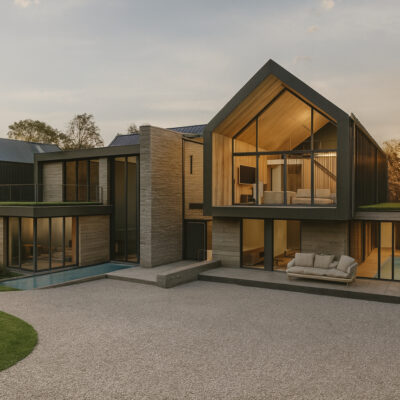Paragraph 79 Homes
The National Planning Policy Framework (paragraph 79, was paragraph 55)
Homes can be approved for development if they meet the requirements of paragraph 79 in this NPPF framework document. It used to be paragraph 55 but the document was subsequently revised.
It’s worth remembering that many rural areas have been in decline so the objective of the legislation is to promote sustainable development and houses should be located where they will enhance or maintain vitality in the rural community. This could mean that where there are groups of smaller settlements, development in one village may support services in another village, so bringing vibrancy to the community.
New isolated homes tend to be disallowed by LPAs unless there are special circumstances. In the original paragraph 55 these were defined as:
- the essential need for a rural worker to live permanently at or near their place of work in the countryside;
- where such development would represent the optimal viable use of a heritage asset. Or alternatively would be appropriate enabling development to secure the future of heritage assets;
- where the development would re-use redundant or disused buildings and lead to an enhancement to the immediate setting and;
- the exceptional quality or innovative nature of the design of the dwelling.
In the last point, innovative nature of the design is further defined:
- be truly outstanding or innovative while helping to raise standards of design more generally in rural areas;
- reflect the highest standards in architecture;
- significantly enhance its immediate setting and;
- be sensitive to the defining characteristics of the local area.
The revised NPPF Paragraph 79 makes some subtle, but important changes and now states:
- there is an essential need for a rural worker, including those taking majority control of a farm business, to live permanently at or near their place of work in the countryside;
- the development would represent the optimal viable use of a heritage asset or would be appropriate enabling development to secure the future of heritage assets;
- the development would re-use redundant or disused buildings and enhance its immediate setting;
- the development would involve the subdivision of an existing residential dwelling and;
- design is of exceptional quality.
Design is defined further again:
- is truly outstanding or innovative, reflecting the highest standards in architecture, and would help to raise standards of design more generally in rural areas and;
- would significantly enhance its immediate setting, and be sensitive to the defining characteristics of the local area.
What are some opportunities with local authorities?
Paragraph 55 (now Paragraph 79) is part of the NPPF. This is a national policy and often more recent than local policies from LAs. It is in effect at a higher level than local policies and can therefore potentially take precedence. But be careful...
It’s crucial to work with Carter’s and build early relationships that are built on sensitivity, patience and trust. Generally speaking, local policies and authorities will resist houses in open countryside. Being within settlement boundaries is preferred.
There have been some famous exceptions but almost all councils will resist and it can be incredibly difficult to obtain planning approval for an NPFF Paragraph 55 (now paragraph 79 house).
An article in the Homebuilding & Renovation Magazine estimated that less than 100 homes have been built since the original exemption (PPS 7) was included 15 years or so ago. Consequently such houses are quite rare.


































